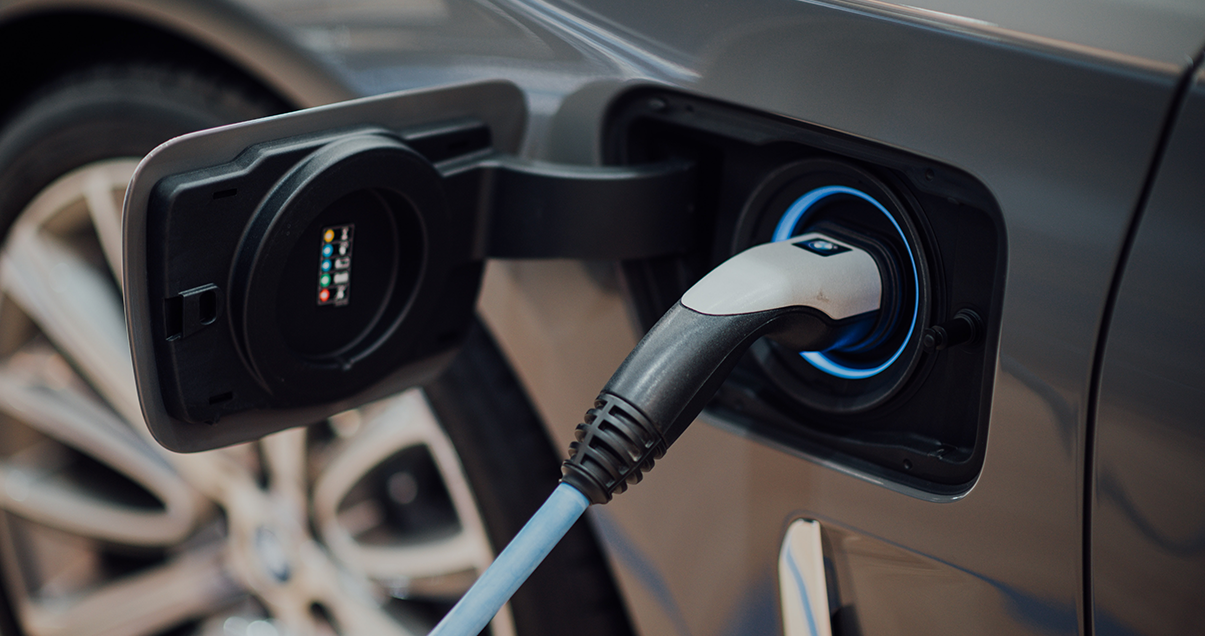E-Mobility in the Coronavirus Era

Even with the economy slowly getting back into gear, forecasts for the decline in German gross domestic product in 2020 as a result of COVID-19 range – depending on the institution – between 4.2%* and 8.8%**. This poses enormous challenges for the entire economy. Government and EU stimulus packages aim to cushion the economic blow, with a mix of various purchase incentives intended to quickly get consumption back on its feet – or at least so politicians hope. A large chunk of this support is directed toward one of Germany’s key industries – the automotive industry, and specifically toward promoting electric and hybrid vehicles. Are these efforts delivering results?
Internal combustion engine cars slump, tentative upturn for electric cars and hybrids
Nobody can currently predict how long it will take until things can be described as normal again. Key sectors such as tourism and the automotive industry have been hit hard, with Lufthansa Group airlines reporting a 98.1% fall in air passengers in April 2020. Lufthansa CEO Carsten Spohr does not expect demand to return to pre-crisis levels before 2024.
The downturn in the automotive sector is not quite so dramatic. Yet here, too, the German Federal Motor Transport Authority (KBA) announced that sales collapsed by 34.5% across all car manufacturers in the period from January to June 2020. In Europe, the industry association aca is expecting sales for 2020 as a whole to fall by a quarter against 2019.
By contrast, the electric and hybrid vehicles segment in Germany reported growth (although unit sales are admittedly still only modest): According to the German Federal Motor Transport Authority, the number of entirely electric vehicles registered between January and June 2020 climbed by around 42.7% in comparison to the first half of 2019 to 44,300. Hybrids that cannot be charged from an external power source picked up by 54.6% to 110,000 units, with plug-in hybrids even surging by around 200% (49,300 vehicles).
Incentives taking effect
Support measures therefore seem to be producing their first positive effects. What do these look like in detail? Generally speaking, the automotive market is of course also benefiting from the temporary VAT reduction from 19% to 16%. On top of this, other aspects of the Federal Government’s stimulus package are also boosting the development and sales of vehicles with alternative drive systems.
- The “innovation premium” subsidizes electric and hybrid vehicles up to a net list price of € 40,000 by offering a premium of €6,000 (€ 4,500 for hybrids). This is twice as high as the previous “environmental bonus.” The total package comes to €2.2 billion.
- A €2 billion bonus program for automotive manufacturers and suppliers is encouraging the introduction and purchase of new technologies, processes and systems that support the switch to alternative drive systems.
- The German Federal Government has also set aside an additional €2.5 billion to upgrade charging infrastructure and fund research into e-mobility.
Ideally, the hope is that these kinds of subsidies will have a twin effect, simultaneously stabilizing the economy while also accelerating the energy transition away from drive systems that run on fossil fuels and toward alternative systems.
Interview with Christopher Schäckermann, director of e-mobility at DKV
It seems like the coronavirus crisis has actually set some developments in motion. To give one example, many motorists know the company DKV (formerly Deutscher Kraftverkehr) by the logo found at many fuel stations indicating that drivers can use the supplier’s fuel card to pay contactless. With mobility services such as fuel cards and fleet management, the company has traditionally focused on conventional (combustion engine) transport. But DKV responded to changes in the sector early on and now offers customers with fleets of company cars an entire spectrum of e-mobility services. Sonnenallee spoke to the director of e-mobility at DKV, Christopher Schäckermann.
Sonnenallee: Mr. Schäckermann, what is DKV doing to promote more e-mobility for company fleets?
Christopher Schäckermann: Three years ago, I assumed joint responsibility for the new e-mobility strategy at DKV and have been really promoting the topic together with my colleagues ever since. Under the slogan “Lead in Green”, e-mobility is also a key pillar of our corporate strategy.
What is the current situation? What specific e-mobility services do you offer your fleet customers?
CS: We provide a whole range of intertwining services. We also offer our fleet customers a card – the DKV CARD +CHARGE – that combines the benefits of a classic fuel card with charging options – i.e., entirely electric vehicles, hybrids and combustion engine vehicles can all be operated with one system. Fleet customers can also use this card for additional services. Together with our Charge4Europe joint venture partner Innogy, we boast one of the largest networks of charging stations in Europe, with around 100,000 charging points at present. We’re also making sure that charging stations are installed not only at the companies themselves but also in the homes of the people who drive the company cars. This is billed centrally using the card.
How have your customers responded to this offer so far?
CS: Fleet operators are really interested. And demand for e-mobility solutions is growing enormously. Although COVID-19 is acting as more of a brake on investment at present, more and more companies are also seeing the crisis as an opportunity to get e-mobility on the roads faster. Now, we need OEMs and vehicle manufacturers to get involved too so that there are enough electric cars available to meet the increasing demand. But it won’t be a radical change. Mixed fleets will be the norm for a long time to come – made up of electric vehicles, hybrids and combustion engine vehicles.

What do you think of the current economic stimulus package designed, for example, to subsidize the purchase of electric and hybrid vehicles (“innovation premium”) and expand charging station infrastructure?
CS: The market is very volatile at the moment but the effect of these subsidies is already noticeable, for example the lower tax rates for electric or hybrid vehicles in comparison to combustion engine cars, especially for company cars. For us at DKV, of course, support for expanding charging infrastructure is also a key factor in allowing us to build up the network more quickly. All in all, this is a very dynamic start-up phase for us. The ramp-up phase will follow in one to two years. This means that customers have enough time to get ready for e-mobility. As an industry pioneer, our job now is to make the most of this momentum and continue to expand our services, including using the incentive program.
In your personal opinion, do you think e-mobility will catch on as THE drive system of the future? If so, how long will that take?
CS: It will play an increasingly vital role in the mix of drive systems. And it will catch on quickly. I’d estimate five years. Nonetheless, I also think hydrogen-powered vehicles will gain in popularity in the medium term, for example in heavy goods haulage. As the key automotive market, China is currently really pushing this issue. So it’s an exciting time!
Car manufacturers under pressure
Car manufacturers are also coming under pressure to keep pushing ahead with e-mobility. German firms have already invested heavily in the shift. This is because, starting in 2021, they will face billion-euro fines if they do not comply with the CO2 limits set by the European Union for car manufacturer’s fleets. Volkswagen, for example, wants to produce a million electric vehicles by the end of 2023, investing €33 billion in the project. BMW, meanwhile, says that by 2025 every third car coming off the assembly line should be electric.
Let’s hope that private customers go along with this, too. Many of them still see the relatively high costs of an electric vehicle and the weak charging infrastructure as an obstacle. There may be hope in the fact that crises often present the best opportunities to make behavioral changes. Or that the costs of electric vehicles will fall if they are produced in significant quantities. Or, that subsidies and offers like those from DKV will cause the network of charging stations to grow so rapidly that motorists will no longer have to fear getting stuck en route.
*Joint forecast from leading economic research institutions, as of June 2020
** OECD, as of June 2020

